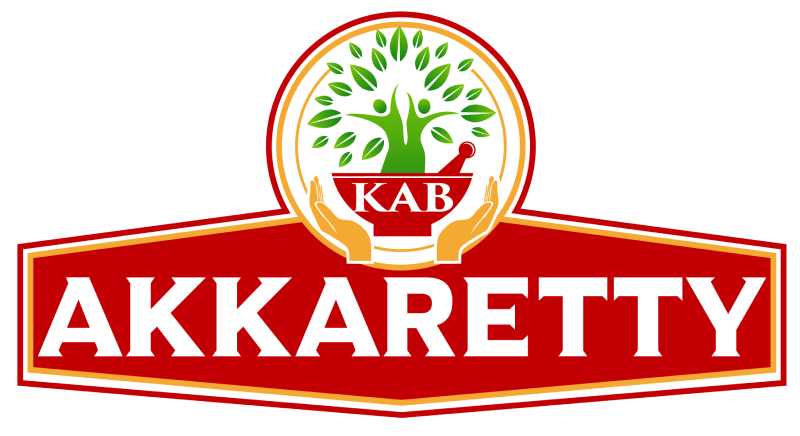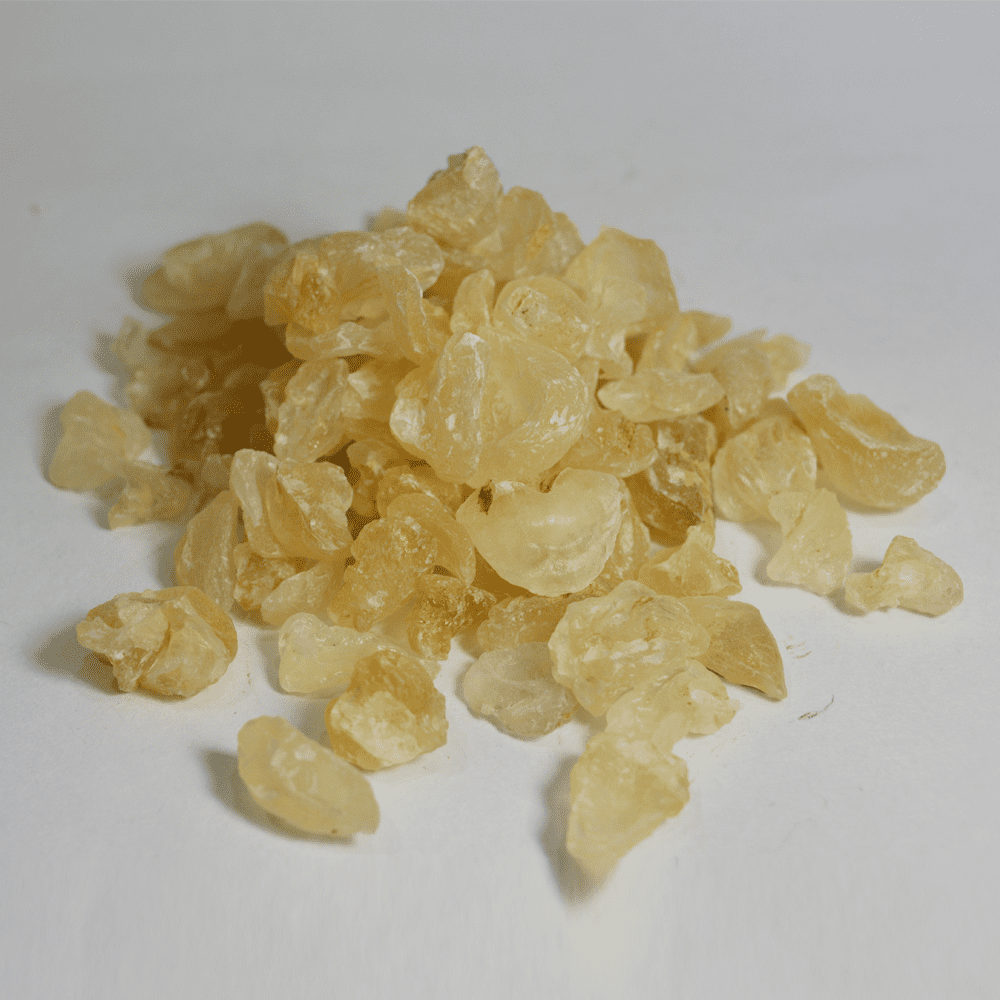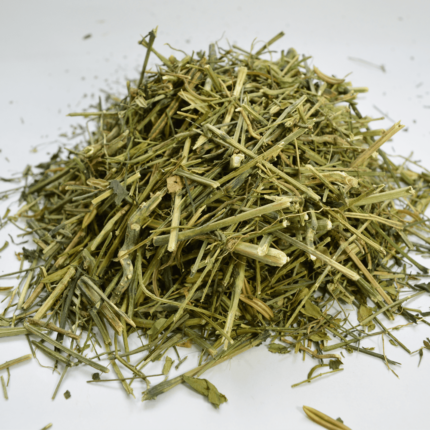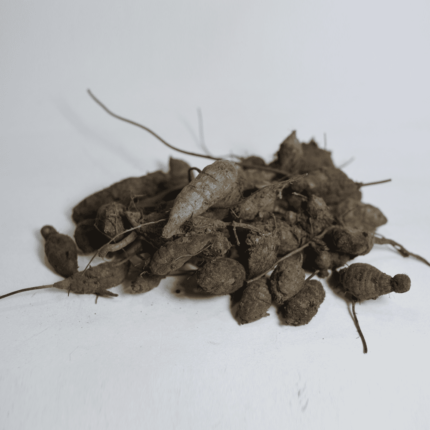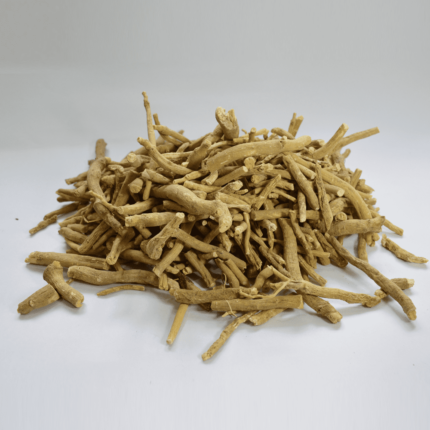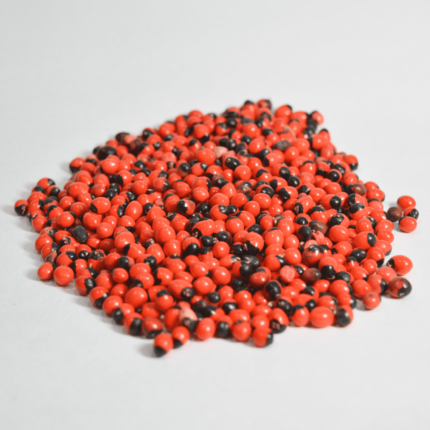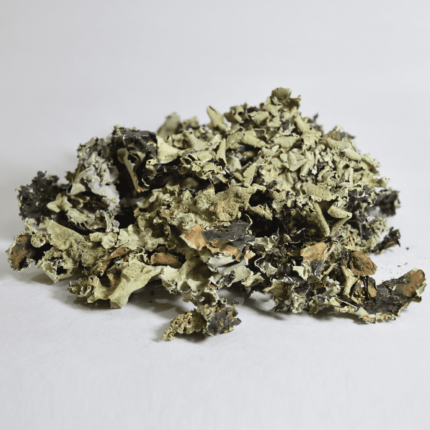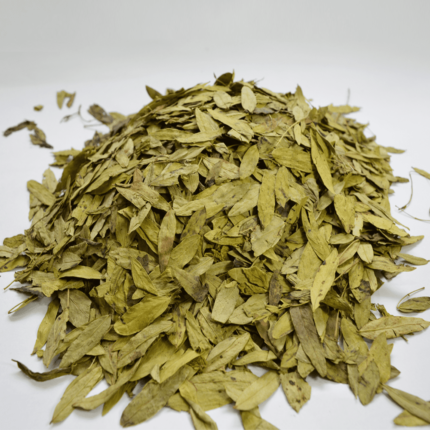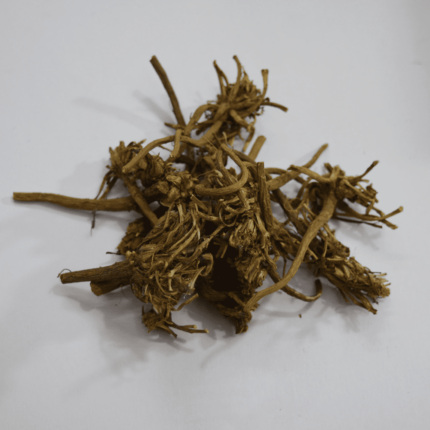Description
Gum arabic, also known as gum sudani, acacia gum, Arabic gum, gum acacia, acacia, Senegal gum, Indian gum, and by other names,[1] is a natural gum originally consisting of the hardened sap of two species of the Acacia sensu lato tree, Senegalia senegal[2] and Vachellia seyal. The term “gum arabic” does not legally indicate a particular botanical source, however.[1] The gum is harvested commercially from wild trees, mostly in Sudan (80%) and throughout the Sahel, from Senegal to Somalia. The name “gum Arabic” (al-samgh al-‘arabi) was used in the Middle East at least as early as the 9th century. Gum arabic first found its way to Europe via Arabic ports, so retained its name.[3] Gum arabic is a complex mixture of glycoproteins and polysaccharides, predominantly polymers of arabinose and galactose. It is soluble in water, edible, and used primarily in the food industry and soft-drink industry
| Botanical Name | Common Name | Tamil | Hindi | Malayalam |
|---|---|---|---|---|
| Acacia senegal | Gum Arabic, Acacia Gum | பாதாம் பிசின் | गोंद कतीरा / Gond Katira | ബദാം പിസിന് / Badam Pisin |
